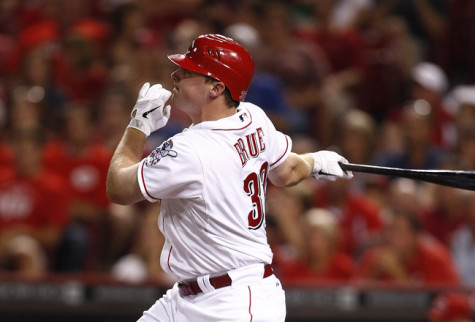
The New York Mets and their fans are hoping Jay Bruce‘s arrival to Citi Field is not posthumous for their season. They enter play after last nights loss to the Yankees 7.5 Games back in the division and 2.5 out of the second wildcard spot. They are further out of contention for a division crown then their opponents, who ironically were sellers at the deadline.
The Mets are also rapidly approaching the worst mark in Major League Baseball history while hitting with two outs and runners in scoring position. Their anemic .170 average in such situations is alarmingly close to the 1965 Houston Astros .167 clip, the team that currently owns this notorious distinction. The Mets failure to tack on more runs in the 6th inning of Monday’s subway series opener contributed to the problem further, as did James Loney being stranded in scoring position by three consecutive batters to end the game.
To review, heading into play against the Yankees on Tuesday, the Mets average with runners in scoring position was .205. If the season concluded today, this would rank the 2016 Mets as the second worst mark in the in the history of Major League Baseball.
That’s how bad the Mets have been as a situational hitting team this season, a team that had expectations to play deep into October.
.Jay Bruce arrives to hopefully be the panacea to what has plagued this floundering club; Hitting with runners in scoring position. Bruce is a .360 hitter with runners in scoring position this season, and leads the National League with 80 RBI.
The club’s epic struggles with runners in scoring position has been widely publicized and discussed throughout the 2016 season. Terry Collins has mentioned a need for his club’s situational hitting to improve as well, going further to comment during a post-game press conference after a loss to the Rockies that it is indeed possible said struggles are weighing on the hitters in run scoring situations.
How much would some production in these spots have helped thus far? Let me show you….
-30- The Proposition
For this proposition, let’s assume the Mets had 30 more hits with runners in scoring through their first 105 games and for every one of those hits they scored 1.25 runs on average, which could be a modest approximation but taking into account the variable being the number of runners on second and/or third in any one of those 30 opportunities.
Thirty more of these situational hits, bringing their season total to 184 with runners in scoring position, would make their average in such spots .245, which is still below the league average mark of .256, which coincidentally the Washington Nationals sit at exactly. .
These thirty hits, resulting in a conservatively estimated 1.25 runs per hit, would bring the Mets total runs scored up from 386 to 423, STILL 30 runs below the league average. And according to the Pythagorean expectation, the increased run differential would have improved their winning percentage from .514 to .561 to-date. Such a run differential, assuming all things are equal with the Nationals, would place them two games behind their rival in the loss column on the day after the trade deadline.
And it’s not such a drastic leap for the Mets to have taken.
These 30 additional hits with runners in scoring position equates to only 1 more hit every 3.5 games. Essentially, a little less than one hit with runners in scoring position per series would have changed the fortunes of the Mets dramatically to this point in the season.
But it’s for this reason alone, along with the Mets established championship-caliber pitching staff, why the injured and floundering Mets should in no way mail the season in just yet.
The ultimate randomness of their inability to succeed with runners in scoring position suggests they can only improve from here. The Mets owe it to the science of baseball to take their chances and acquire better run producers to counteract the injury plague on the basic ability to be better situational hitters, and a little luckier as well.















